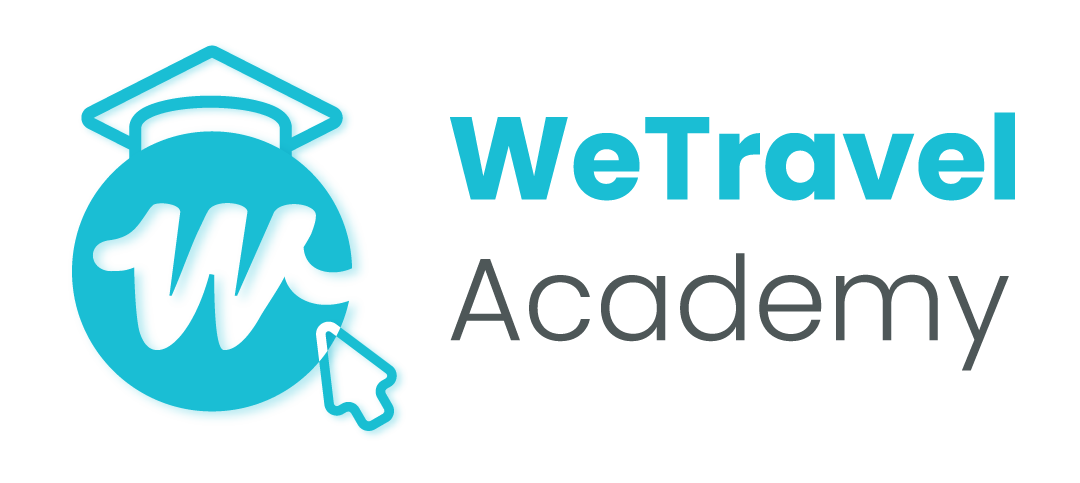In a survey conducted, 79% of people reported that engaging content made a significant impact on whether they purchased a product/service.
And so, when it comes to developing a marketing strategy for tourism, you simply can’t overlook the power of inbound marketing.
Inbound marketing is centered around taking a customer-centric approach and drawing people to your brand. It’s a fundamental digital marketing concept, and it can make a significant impact in helping to grow your travel business.
In this guide, we’ll cover what exactly inbound marketing is, how it works, and how your travel business can take full advantage.
What Is Inbound Marketing?
Inbound marketing is the process of attracting customers to your business by sharing content that interests and engages them. It is a softer approach when compared to outbound marketing, which is a more direct tactic.
Inbound marketing is a useful strategy because it’s non-invasive, and helps you direct qualified traffic and prospects to your site.
Common examples of inbound marketing include publishing SEO-friendly blog posts, YouTube videos, or social media content. Basically, anything that your target audience is actively interested in.
This differs from strategies like running paid ads or cold-calling and emailing prospects - as these are approaches where you’re trying to put your brand in front of potential customers.
It’s an organic approach to marketing and, when done right, it can have many powerful benefits for your travel business.
Why Is Inbound Marketing Important?
Running an inbound marketing strategy is an effective way to help your business attract the right target customers, build trust with them, generate engagement from your audience, and develop long-term relationships with your clients.
Inbound marketing helps you make an authentic connection. When done properly, it positions your brand as a trusted expert within your niche, and it helps you develop positive brand awareness without potentially annoying your audience.
Inbound marketing can also help you achieve excellent long-term results. With strategies like email marketing or SEO, the cost of marketing is incredibly low and it can generate loads of value for your brand over the long run. This means inbound marketing offers a fantastic ROI for travel businesses.

Understanding The Customer Journey
Successfully executing an inbound marketing strategy is all about understanding your customers and their journey. This is because inbound marketing is focused on publishing the right content at the right stage of the buying journey to help you attract, engage, and convert your prospects.
The customer journey can be broken down into five main stages:
Awareness
This is the stage when prospects discover your brand and learn about what you do.
Interest
At this stage, the prospect starts showing an interest in your brand. This is when they start understanding more about what you offer and how you can solve their pain point. An important element of this stage of the journey is developing trust with the prospect
Consideration
The prospect fully understands what you do and they are interested in making a purchase. Now they seriously consider your brand as an option.
Purchase
This all-important stage is where a prospect decides whether to pull the trigger and make a purchase and becomes a customer.
Retention
This is the very last stage of the funnel, where you maintain engagement with customers and try to drive repeat purchases from them.
These are the general stages of the customer journey. In order to maximize your inbound marketing efforts, you need to make sure that you publish content that matches the intent and interest of the customer at each stage of this journey.
This can be spread out across various channels such as your blog, social media, email marketing, live events, and so on.

Your goal should be to create content that helps address your customer's pain points and questions at each stage of this journey and move them further along to the conversion stage, where they will book a tour.
Understanding the Inbound Marketing Flywheel
The flywheel model is another important concept to understand when it comes to inbound marketing. This model refers to the different aims of your content during the different stages of the customer journey. There are three main purposes to understand here:
Attract
To generate awareness about your brand and attract new prospects. The marketing content you create here is geared toward strangers who don't know about your business and to get them interested and interacting with your brand.
Engage
This is when you publish content that engages current prospects who now know about your brand and have shown an interest in what you offer. This content turns your prospects into customers.
Delight
The content you publish here is aimed at maintaining and improving relationships with existing customers. Your goal should be to keep customers engaged with your business and turn them into promoters of your brand.
When each stage works together, the entire marketing flywheel is designed to grow your travel business.
In terms of content marketing, each stage of the flywheel flows seamlessly into the next. This means the marketing messages and content you produce need to align with the customer journey and help you move customers along as their interests and positions change.

How To Use An Inbound Marketing Strategy For Tourism
When it comes to developing a marketing strategy for tourism, inbound marketing is essential. It’s a customer-centric marketing approach that helps you effectively target the right people and build the right kinds of relationships.
To help you develop a powerful inbound marketing strategy, here are some of the key steps and tactics you’ll need to follow.
1. Understand Your Target Customers
Effective inbound marketing starts with understanding your target customers. This involves knowing what pain points, questions, and desires they have.
Your goal here is to understand what kind of content they would be searching for and engaging with online in order to book an experience with your travel business.
So, dive deep into your target customer personas and try to gain as strong of an understanding of your customers as possible. Learn about their interests, demographics, online behaviors, questions, and more. This will help give your inbound marketing strategy a clear direction.
2. Choose The Right Inbound Marketing Channels
You’ll need to choose the right inbound marketing channels to market your brand. This could include a blog, social media channels, a YouTube account, a podcast, or more. Whatever you choose, make sure that it aligns with your target audience and their online behaviors.
Once you establish these channels, use them to direct traffic to your website. Your website is your main online asset, and it’s where you’ll generate bookings.

However, people won’t always go straight from seeing an Instagram post to converting on your booking page. As we’ve discussed, there’s a customer journey you need to align your inbound marketing efforts with.
When you establish your marketing channels, understand what part of the journey they will target and how they will achieve this. For example, you could use the following tactics:
- SEO blog content: Attract stage
- Social media: Engage stage
- Booking pages: Convert
- Email newsletter with discounts and offers: Delight stage
Once you have established what marketing channels you will use, you can start to create strategic content for them to match the different stages of the buying journey.
3. Create Valuable Content To Attract Prospects
As we’ve already established, inbound marketing starts by attracting potential customers to your brand.
This means that you need to create valuable content that will help you drive new traffic to your website. SEO blog content is one of the most effective ways to do this.
The idea here is to create content that:
- Informs
- Educates
- Inspires
Your goal should not be to try to sell to people but rather to rope them into your business, make them aware of what you do, and potentially opt them into a mailing list. So, make your content interesting, let it answer all your prospect's questions, and ensure it's something they search for.
For example, let's say your travel business offers tours to San Diego. You could publish content like “A Guide To The Best Time To Visit San Diego” or “The Top 10 Attractions In San Diego”.

This will help you attract people who are in the early stages of researching a holiday in San Diego but have not yet started looking for a tour operator.
This is a great example of inbound marketing because the prospect has performed a search and found your business - without you reaching out to them.
4. Engage Prospects With Strategic Marketing Tactics
Now you need to maintain the attention of people who have discovered your brand and engage them. You could achieve this by getting prospects to sign up for your mailing list or follow you on social media.
This is where you publish content focused more on what your business does, what travel offers you have, and why prospects should trust you.
Including things like testimonials, positive reviews, or videos of previous trips you’ve done are all great ways of engaging your prospects.
Did you know that WeTravel offers a Customer Review Widget? With this feature, you are able to automatically gather reviews from previous customers and add them to your website (all within a few lines of code). This will improve your conversion rate, even when adding only a couple of reviews.
5. Answer Questions
When administering inbound marketing, your aim should be to develop trust and ensure prospects can move along the customer journey swiftly. To do this, they need to find all the information they're after and have all their questions answered.
A useful way to achieve this is to create informative resources for your customers - such as an FAQ page on your website or blog posts addressing communion customer questions.

This, apart from being a great customer-centric practice, can be a helpful source of information to enhance the marketing resources you’ve created around your tour or even be a source for long-format blog posts if you find an interesting and recurring question.
Did you know that Wetravel has a feature within our trip pages that allows travelers to ask questions before booking a tour?
6. Inspire Your Audience
When it comes to travel industry content marketing, you can generate a lot of interest by inspiring your prospects. Post content about your destinations, trips, and experiences that gets your prospects dreaming. This is a great inbound marketing tactic for moving prospects down your funnel.
You could utilize video and social media to create some innovative, inspiring posts. This will also help prospects understand more about what your business offers and why your trips would be beneficial for them.
7. Optimize The Booking Stage
When looking at inbound marketing across the buyer's journey, it's essential to consider the booking stage. This is the final stage of the customer journey and it's where you will turn prospects into customers.
At this stage, when the customer is ready to book, you can’t afford to lose them to the competition (because their buying intent is palpable). You’d be giving the competition a fully nurtured lead.
It's important that you make the booking process as simple and streamlined as possible. Make sure that you provide enough information required in your booking system, and that your online booking pages are easy to navigate and complete.

Did you know that WeTravel offers an optimized booking system for the travel industry, where you can add booking buttons and booking pages directly to your site? It’s the ideal solution for streamlining the customer journey and converting more prospects.
Interested to know more about what WeTravel can do for your business?

Summary
In order to increase tour bookings, it is imperative that you attract and communicate with the right target audience and provide them with suitable marketing messages to entice them to book a tour.
Inbound marketing is an excellent way for travel businesses to achieve this.
Instead of taking a more direct approach with your audience, inbound marketing provides value to your customers and tempts them with the kind of subtle content they want to see. This helps you spread more positive brand awareness and gain more credibility with your customers, which is likely to result in more conversions.
New resources, straight to your inbox
We’re committed to your privacy. WeTravel uses the information you provide to us to contact you about our relevant content, products, and services. You may unsubscribe at any time.





